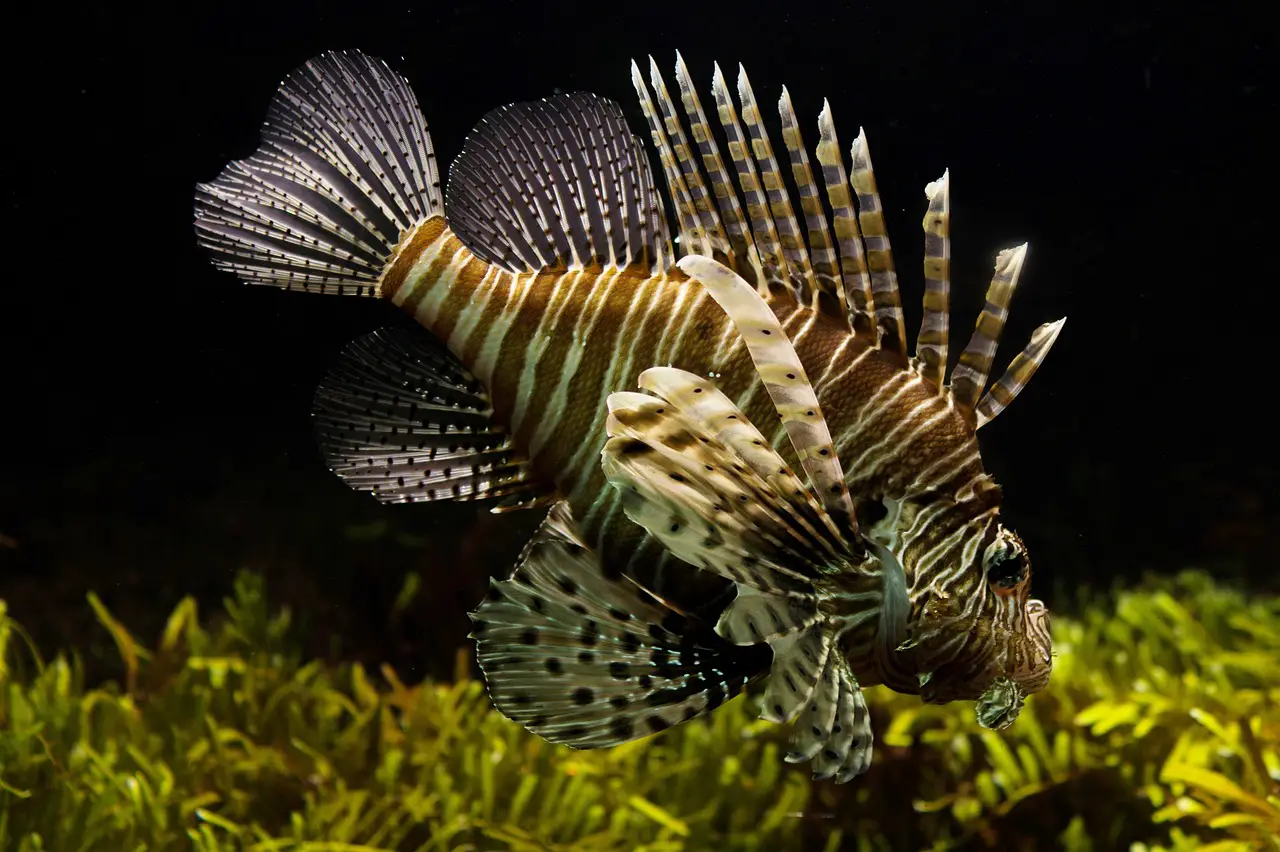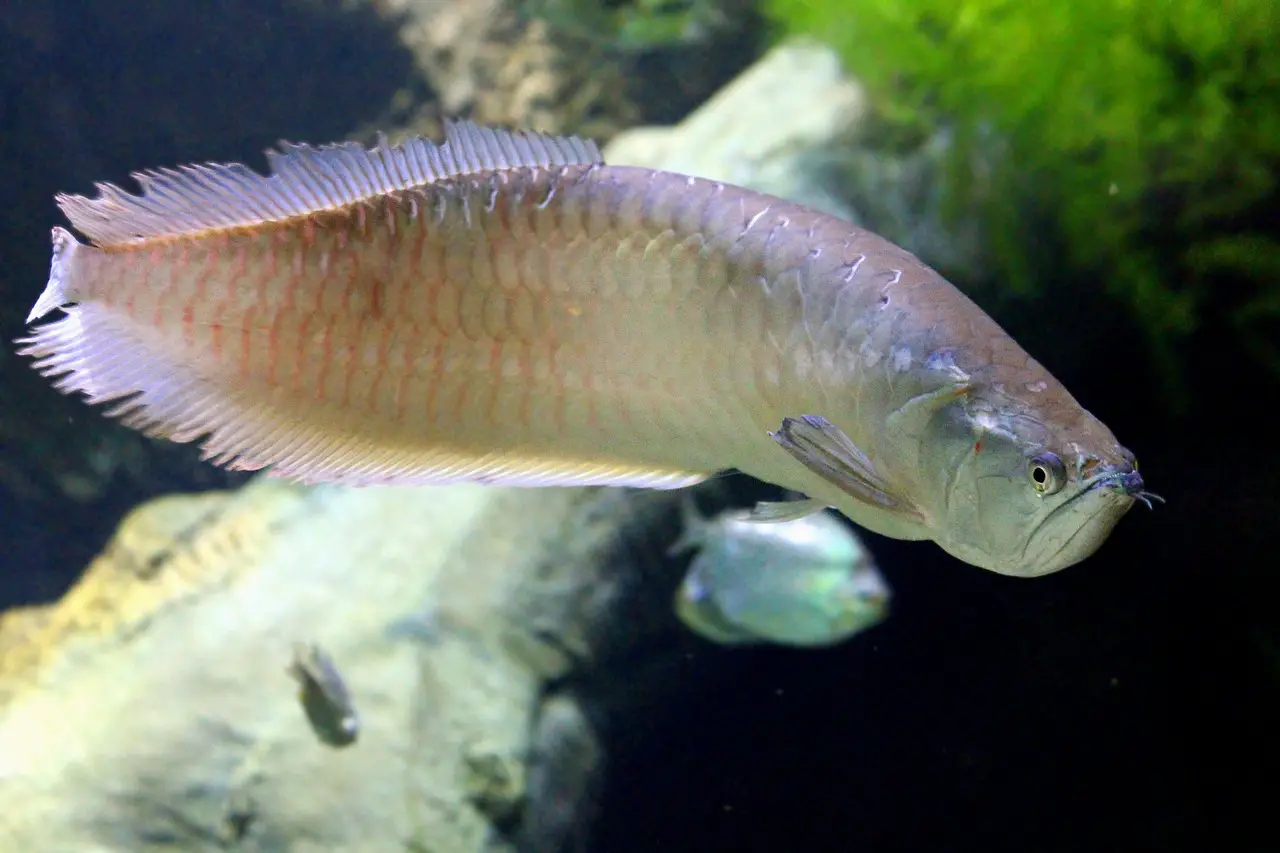The allure of mythical creatures has always captivated human imagination. Among these creatures, dragons hold a special place, with their majestic appearance and legendary tales. However, there exist real-life counterparts that bear an uncanny resemblance to these mythical creatures—the dragon-like fish. In this article, we will explore the fascinating world of fish that looks like a dragon, their unique features, cultural significance, and their place in our hearts.
You may also want to read about remora fish.
Species of Fish That Looks Like a Dragon:
Several species of fish exhibit dragon-like characteristics. Let’s dive into the enchanting world of these aquatic creatures:
Asian Arowana
The Asian Arowana, also known as the “Dragon Fish,” is renowned for its resemblance to the mythical dragon. This elegant fish boasts vibrant colors, long and sleek bodies, and scales that bear a striking resemblance to dragon scales. Revered in Asian cultures, the Asian Arowana symbolizes luck, prosperity, and power.
Wels Catfish
The Wels Catfish, native to Europe, showcases a unique appearance reminiscent of a dragon. With its elongated body, large mouth, and prominent whiskers, this predatory fish exudes an air of mystery and power. Growing to impressive sizes, the Wels Catfish can reach lengths of over 10 feet and weigh several hundred pounds.
Arapaima
The Arapaima, native to the Amazon basin, is known as the “Giant Dragonfish.” Its elongated body, robust scales, and bony head give it a distinct dragon-like appearance. With their ability to breathe atmospheric air using a specialized organ, these fish can often be seen breaking the water’s surface, adding to their mythical allure.
Bichir
The Bichir, also known as the “Dinosaur Fish,” is an ancient species that harks back to prehistoric times. With its elongated body, armor-like scales, and unique fin structure, the Bichir bears a striking resemblance to the mythical dragons of old. This hardy fish can survive in oxygen-deprived environments and has adapted to both water and land.

Fish That Looks Like a Dragon: Unique Features
What sets these dragon-like fish apart from others in the aquatic world? Let’s explore their captivating features:
Scales and Colors Resembling Dragon Scales
The scales of dragon-like fish exhibit a remarkable resemblance to the scales depicted in legends and folklore. These scales often possess vibrant colors, iridescence, and intricate patterns, further enhancing their dragon-like appearance.
Long, Sleek Bodies
Dragon-like fish typically have elongated bodies, allowing them to glide effortlessly through the water. Their streamlined physique contributes to their graceful movement, evoking the serpentine elegance associated with dragons.
Fish That Looks Like a Dragon: Facial Features
Some species exhibit distinct facial features reminiscent of dragons. Prominent jaws, fierce eyes, and specialized sensory organs contribute to their captivating and mythical allure.
Habitat and Distribution
Dragon-like fish inhabit various regions across the globe. Each species has its preferred habitat, which influences its distribution. Asian Arowanas are native to Southeast Asia, Wels Catfish reside in European rivers and lakes, Arapaima call the Amazon basin home, and Bichirs are found in Africa.
These fish have adapted to their specific environments, thriving in freshwater ecosystems such as rivers, lakes, and swamps. Understanding their native habitats helps us appreciate the diverse ecosystems that support these remarkable creatures.
Fish That Looks Like a Dragon: Mythology and Symbolism
Dragons have held a significant place in mythology and folklore across cultures for centuries. Their association with power, wisdom, and protection has made them iconic symbols. The resemblance of dragon-like fish to these mythical creatures has often led to cultural symbolism and legends.
In many Asian cultures, the Asian Arowana is considered a symbol of luck, prosperity, and power. It is believed that owning an Asian Arowana brings good fortune and wards off evil spirits. The Wels Catfish, with its intimidating appearance, has been associated with tales of mystery and strength, inspiring awe and respect.
Behavior and Adaptations
Dragon-like fish exhibit fascinating behavior and unique adaptations. Let’s explore some of their notable traits:
Feeding Habits and Predatory Behavior
These fish are formidable predators, employing various hunting techniques. They possess sharp teeth and powerful jaws to capture their prey swiftly. The Wels Catfish, for example, is known for its voracious appetite and ability to consume large prey.
Reproduction and Parenting
Dragon-like fish often engage in elaborate courtship rituals and parental care. Males may showcase impressive displays to attract mates, while females invest considerable effort in protecting and nurturing their offspring. These behaviors highlight the complexity of their social interactions and reproductive strategies.
Care and Keeping as Pets
Many enthusiasts are drawn to the idea of keeping dragon-like fish as pets. However, it’s important to understand the challenges and requirements associated with their care:
Challenges
Dragon-like fish have specific environmental needs, such as suitable tank size, water quality, and diet. Their size, predatory nature, and potential for aggression mean that housing them requires careful consideration and appropriate filtration systems.
Suitable Habitat
Creating a suitable habitat for dragon-like fish involves providing ample swimming space, appropriate hiding spots, and tank decor that resembles their natural environment. A well-maintained tank with proper water parameters is essential for their health and well-being.
Conservation Status
The conservation status of dragon-like fish species varies. Due to habitat destruction, overfishing, and other human-induced factors, some species face significant threats. Efforts are underway to protect their habitats, regulate their trade, and promote responsible aquaculture practices to ensure their long-term survival.
Fish That Looks Like a Dragon
The allure of dragon-like fish has permeated popular culture, inspiring references in various forms of art and media. From ancient folklore and mythical tales to modern literature, movies, and artwork, these captivating creatures continue to captivate our imagination and fuel our creative endeavors.
Case Study: Asian Arowana
Among the dragon-like fish species, the Asian Arowana stands out with its cultural significance and stunning appearance. This fish holds a prominent place in Asian mythology, often associated with wealth, prosperity, and good luck. Due to their popularity and rarity, Asian Arowanas are highly sought-after by collectors and enthusiasts.

Case Study: Wels Catfish
The Wels Catfish, with its impressive size and distinctive appearance, has earned its place in folklore and fishing tales. Its reputation as a formidable predator has contributed to its mystical appeal, captivating the hearts of anglers and storytellers alike.
Case Study: Arapaima
The Arapaima, with its colossal size and dragon-like features, is often referred to as the “Giant Dragonfish.” Native to the Amazon basin, this fish holds great ecological importance and cultural significance in the regions it inhabits. Unfortunately, habitat loss and overfishing have resulted in declining populations, necessitating conservation efforts to protect this majestic species.
Case Study: Bichir
The Bichir, an ancient fish species with a dragon-like appearance, has fascinated scientists and aquarists alike. Their unique characteristics and hardy nature make them popular among aquarium enthusiasts seeking a glimpse into the primordial past.
Conclusion
The realm of dragon-like fish transports us into a world where reality and myth intertwine. With their striking appearances and captivating behaviors, these aquatic creatures evoke the essence of mythical dragons. From the Asian Arowana to the Wels Catfish, Arapaima, and Bichir, each species brings its own allure and charm to the aquatic tapestry.
As we appreciate these marvels of nature, let us remember the importance of conservation and responsible pet keeping. By protecting their habitats and raising awareness, we can ensure the continued existence of these remarkable fish for generations to come.
FAQs
Q: Can dragon-like fish breathe fire? A: No, dragon-like fish cannot breathe fire. While their appearance may resemble that of mythical dragons, they lack the ability to produce or emit fire.
Q: Are dragon-like fish dangerous? A: Dragon-like fish are not inherently dangerous to humans. However, some species, such as the Wels Catfish, can grow to impressive sizes and have powerful jaws, so caution is advised when handling them.
Q: What is the average lifespan of these fish? A: The lifespan of dragon-like fish varies among species. Asian Arowanas can live up to several decades, while others, like the Bichir, can live for 10 to 20 years or more with proper care.
Q: Can dragon-like fish be kept in a regular aquarium? A: Keeping dragon-like fish requires larger aquariums due to their size and specific habitat needs. A regular-sized aquarium may not provide enough space for their growth and well-being.
Q: Are there any endangered dragon-like fish species? A: Yes, some dragon-like fish species, such as the Arapaima, are considered endangered due to habitat loss and overfishing. Conservation efforts are crucial to protect these species and their ecosystems.
